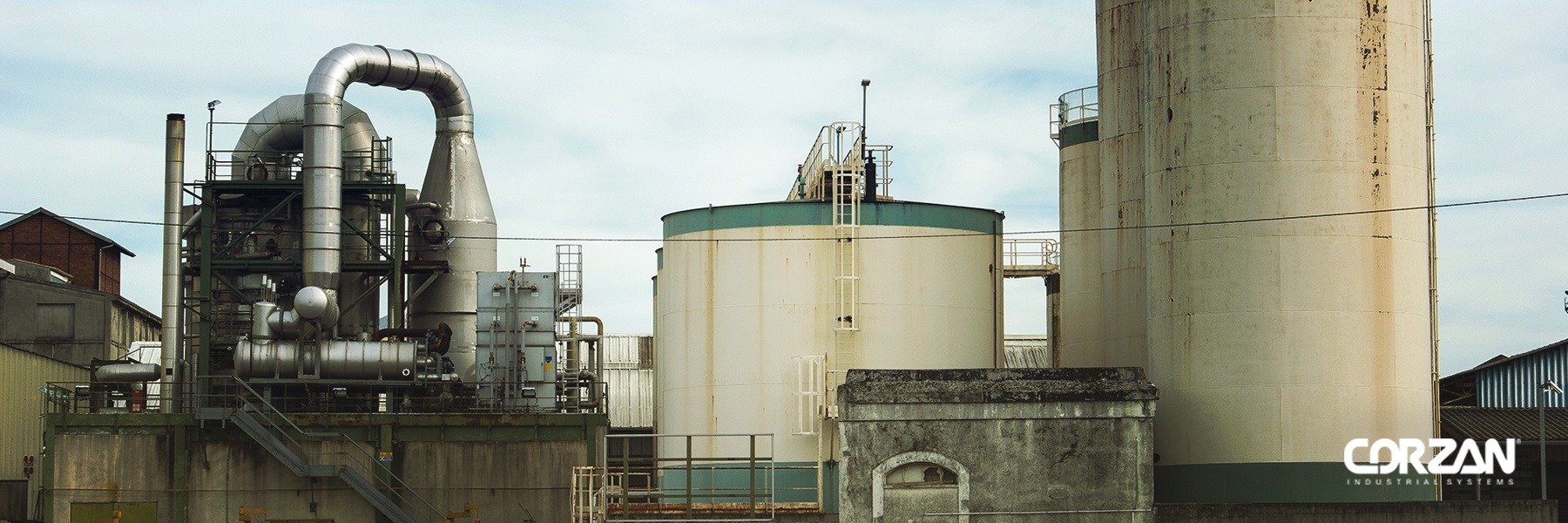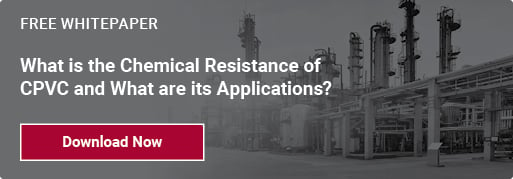How Dual Laminate Vessels Are Manufactured for a Long-Lasting Service Life
Food, pharmaceutical, chemical and paper industries often use vessels for processing corrosive and caustic substances. Traditionally, these vessels are composed of steel, fiberglass or exotic alloys. Because chemical corrosion often deteriorates metals over time, the need for a more compatible and long-lasting vessel material is apparent.
The solution? Dual laminate vessels.
Dual laminate vessels are hybrid chemical storage systems made up of a thermoplastic liner and a fiber reinforced plastic (FRP) shell. The FRP component provides mechanical strength to the vessel, while the thermoplastic liner increases the chemical resistance of the inside, preventing corrosion.
Thermoplastics allow dual laminate vessels to withstand the effects of highly corrosive chemicals at high temperatures. These chemicals may include:
- Sodium hypochlorite
- Hydrochloric acid
- Cell liquor (brine, sodium hydroxide)
- Sodium Chloride
- Sodium hydroxide
- Demineralized, deoxidized water
The inherent chemical resistant properties of thermoplastics, like CPVC, result in longer-lasting containers. This material choice directly reduces the downtime required for repairs and can limit replacements.
However, dual laminate vessels must be designed and fabricated specifically for each plant’s applications and needs. Below, we explain how dual laminate vessels are manufactured to withstand the effects of these highly corrosive substances, and the main phases that must be carefully considered.
Design
When a chemical processing plant decides to implement a dual laminate vessel, several considerations are involved, including the vessel’s physical constraints (size and type) and the operating constraints (temperature, pressure and chemical concentration).
Once these constraints are determined, there are two material specifications that must be carefully considered for a reliable vessel:
- The material of the liner. The thermoplastic liner must be compatible with the chemical it comes in contact with and be able to withstand the operating temperature demands. Commonly, CPVC is used to line dual laminate vessels due to its chemical resistance to most acids, bases and salts. View the chemical resistance chart for Corzan® CPVC’s compatibility with 400+ chemicals.
- Type of bonding agent used to fuse the liner with the FRP. This is important because bonding agents are only compatible with certain materials. With CPVC, a bonding agent can be directly applied to the liner and the FRP, and then fused together. With other liners, like polyvinylidene fluoride (PVDF) or polypropylene (PP), a fiber backing must be used for bonding.
Aside from the compatibility concerns related to specification, important consideration should be given to consistency and quality. All components specified—including the liner, moldings, fittings, sheet material, and welding rod—should be created from compounds manufactured from a single supplier, as it directly impacts the reliability of the vessel.
If a single part of the vessel is not formulated to work with the other components, or multiple manufacturers are used, reliability may be negatively impacted.
For example, if Corzan CPVC is specified, the sheet of the vessel body, the welding rod used for joining, and the pipe used for nozzles should be made of Corzan CPVC. This allows for easy weld execution across the vessel, leading to a longer service life.
Learn more about why material consistency matters in this post about welding rod selection.
Fabrication
Once the dual laminate design has been carefully planned, the dual laminate and its components are fabricated into end products by a fabricator.
First, the dual laminate lining must be fabricated to fit the inside of the FRP. To form the correct shape and size, fabricators can wrap the CPVC sheet around a casting or mandrel (for round tanks).
Once the liner is shaped, it’s then welded to the FRP. Dual laminate manufacturing requires a high quality fabrication system and a skilled welder. Fabrication also requires the shop certification standard, ASME RTP-1 “Reinforced Thermoset Plastic” Corrosion Resistant Equipment, which ensures the weld efficiency of the operator will be at least 80%. Welding CPVC liners can be done with hot air, fusion or hot plate welding.
After the liner is welded together, the bonding agent is applied to the exterior of the liner with careful execution.
For example, to achieve reliable adhesion when wrapping Corzan CPVC sheet or pipe with fiberglass, set instructions should be followed. Effective joining occurs when:
- The surface of the pipe is roughed up to accept adhesion.
- A compatible bonding resin is applied with the appropriate amount.
- Each layer of fiberglass is then applied with the appropriate layer of resin, according to the application.
After the bonding agent is thoroughly applied, the FRP is wrapped around the liner to provide the structural integrity. When the shape is cured, nozzles, ports or band ways are attached to the cylindrical portion of the vessel.
Additionally, consistency and quality during fabrication are two issues that affect dual laminate fabrication. Because fabrication processes and techniques heavily influence reliability, ensure your fabricator has the proper certification and quality-monitored systems needed for a successful fabrication.
Vycom is a trusted partner manufacturer of Corzan CPVC sheet, whose products can be fabricated for dual laminates vessels.
Want to Learn More About Corzan CPVC?
Corzan Industrial Systems sheet material is available from a network of manufacturers and distributors for easy access to the best thermoplastic material available in the world. If you'd like to schedule a time to discuss our industrial CPVC capabilities or to connect with a certified partner manufacturer, contact us.


